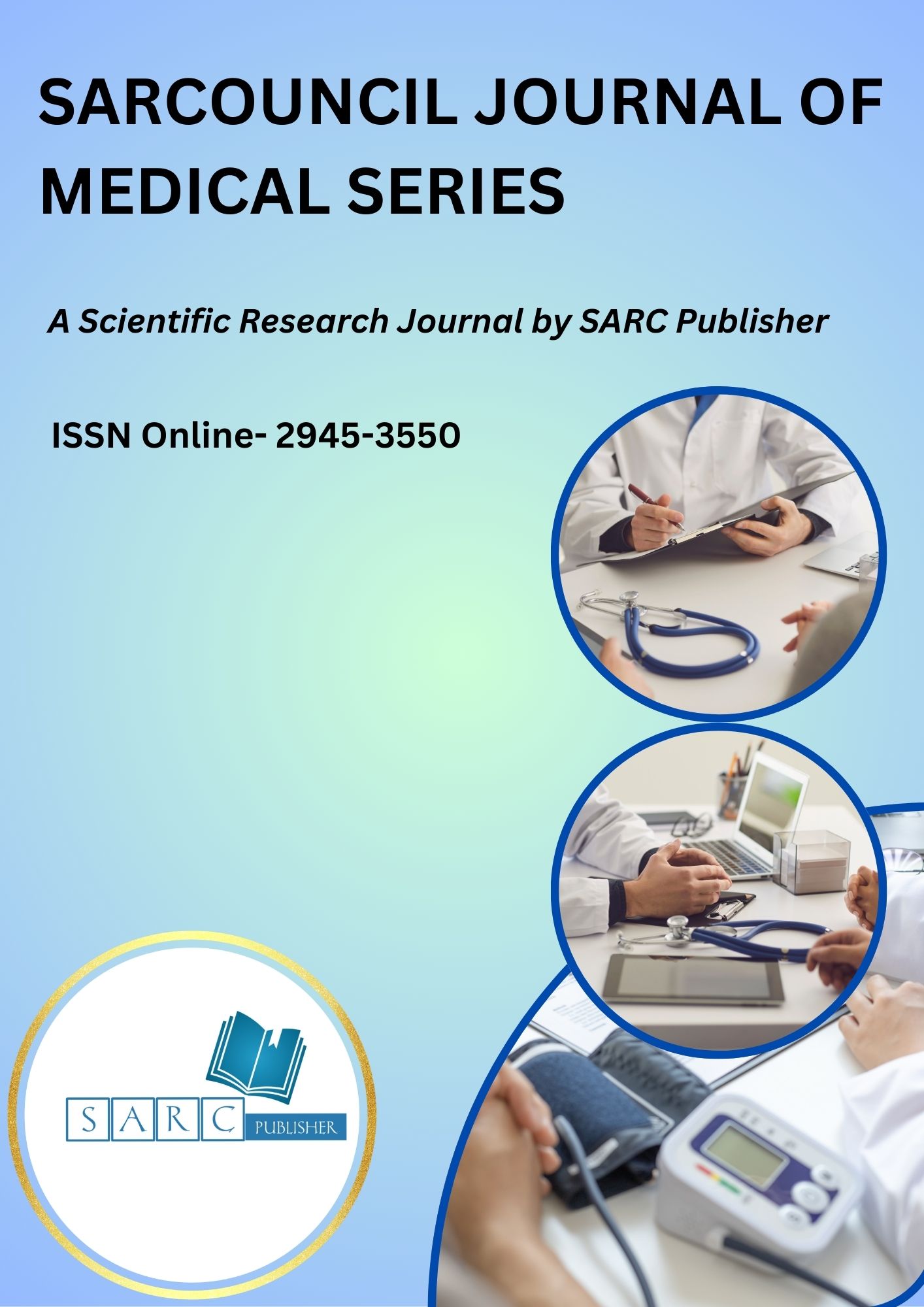Sarcouncil Journal of Medical Series

Sarcouncil Journal of Medical Series
An Open access peer reviewed international Journal
Publication Frequency- Monthly
Publisher Name-SARC Publisher
ISSN Online- 2945-3550
Country of origin- PHILIPPINES
Impact Factor- 3.7
Language- English
Keywords
- Pathology, Radiology, Serology, Surgery, Biochemistry, Biophysics, Cytology, Embryology, Endocrinology, Epidemiology, Genetics, Histology
Editors

Dr Hazim Abdul-Rahman
Associate Editor
Sarcouncil Journal of Applied Sciences

Entessar Al Jbawi
Associate Editor
Sarcouncil Journal of Multidisciplinary

Rishabh Rajesh Shanbhag
Associate Editor
Sarcouncil Journal of Engineering and Computer Sciences

Dr Md. Rezowan ur Rahman
Associate Editor
Sarcouncil Journal of Biomedical Sciences

Dr Ifeoma Christy
Associate Editor
Sarcouncil Journal of Entrepreneurship And Business Management
The Spectrum of SARS-CoV-2 Related Movement Disorders is Broad and Requires Elucidation of the Underlying Pathophysiology
Keywords: SARS-CoV-2 infection, movement disorder, RT-PCR, complication, outcome.
Abstract: We read with interest Pillai et al’s article on a systematic review of 82 studies reporting on 133 patients with movement disorders following SARS-CoV-2 infection (SC2I) [Pillai, K. S. et al., 2023]. Mixed movement disorders were found to be the most commonly reported, with myoclonus-ataxia syndrome being the most common (44% of patients) [Pillai, K. S. et al., 2023]. Myoclonus increased with age, tremor occurred with the longest latency after SC2I, and myoclonus improved at follow-up, while Parkinsonism and tremor persisted [Pillai, K. S. et al., 2023]. Several points require discussion. The first point is that the number of movement disorders associated with SC2I is incomplete [Pillai, K. S. et al., 2023]. SC2I can be associated not only with Parkinsonism, ataxia, chorea, dystonia, opsoclonus, myoclonus, and tremor, but also with restless leg syndrome (RLS), tics, hemiballism, akathisia, Tourette syndrome, and tardive dyskinesia [Tan, B. J . et al., 2024]. The second point is that the causal relationship between SC2I and movement disorder has not been discussed in detail. Apart from the temporal context, there was little discussion about how to establish a causal connection. Since central nervous system (CNS) disease following SC2 is thought to be due either to direct invasion of the virus into the CNS or to a local or systemic immune response, it would have been interesting to know in how many patients there was evidence for cerebrospinal fluid (CSF) invasion of the virus or immune reactions in the CSF. How many patients had CSF positive for SC2 by RT-PCR? In how many cases were cytokines, chemokines, glial factors (e.g. glial fibrillary acidic protein), tau protein, 14-3-3, neurofilament light chains, sphinganine, or ST1A1 increased in the CSF, as reported in patients with CNS complications from SC2I [Jarius, S . et al., 2022]? As long as the causal relationship has not been proven beyond doubt, movement disorders after SC2I cannot be said to be caused by SC2I. The third point is that no distinction was made as to how many patients had the movement disorder primary and how many were secondary to another CNS disorder. Since they can be due to ischemic stroke, intracerebral bleeding, infectious or immune encephalitis [Maramattom, B. V . et al., 2022] and since these CNS disorders can also be complications of SC2I, it would have been useful to examine the studies not only on movement disorder but also on other CNS disease related to SC2I. The fourth point is that no evidence has been presented as to how SC2I was diagnosed. Since SC2I is usually diagnosed by antigen testing or the determination of neutralising IgG or IgM antibodies against the spike protein, it should have been reported how many patients were diagnosed with SC2I using RT-PCR and how many with other diagnostic procedures. Because antigen testing can be complicated by false positive and negative results and the detection of antibodies can miss the exact onset of SC2I, patients not diagnosed by RT-PCR should be excluded from analysis. A fifth point is that the long-term outcome of movement disorders has not been extensively reported [Pillai, K. S. et al., 2023]. We should know how often movement disorder disappeared completely and how often it persisted. Knowing the outcome can influence the decision about prevention and booster vaccination. In summary, SC2I-related movement disorders are a common complication of SC2I and the spectrum of its subtypes is broader than expected. Only patients in whom SC2I was confirmed by RT-PCR should be included in an analysis of SC2I-related movement disorders
Author
- Josef Finsterer
- MD; PhD; Neurology & Neurophysiology Center; Vienna; Austria.

